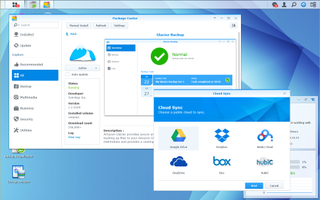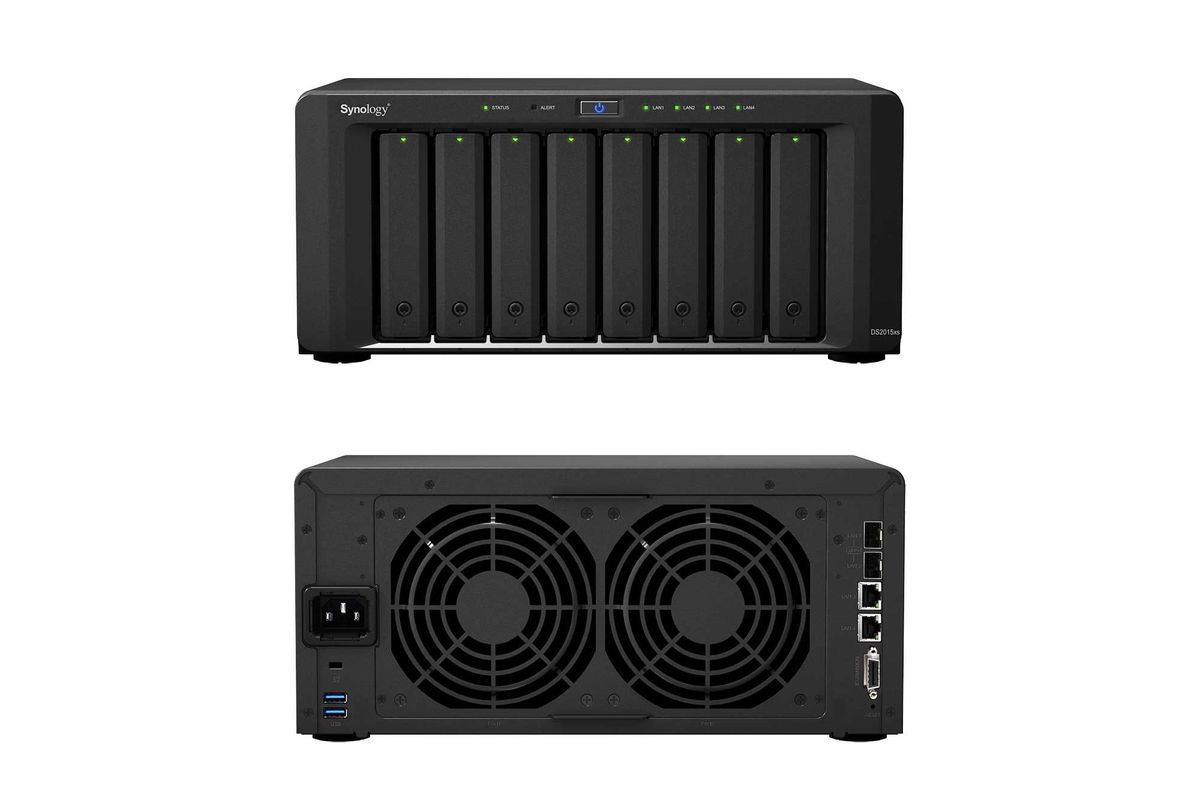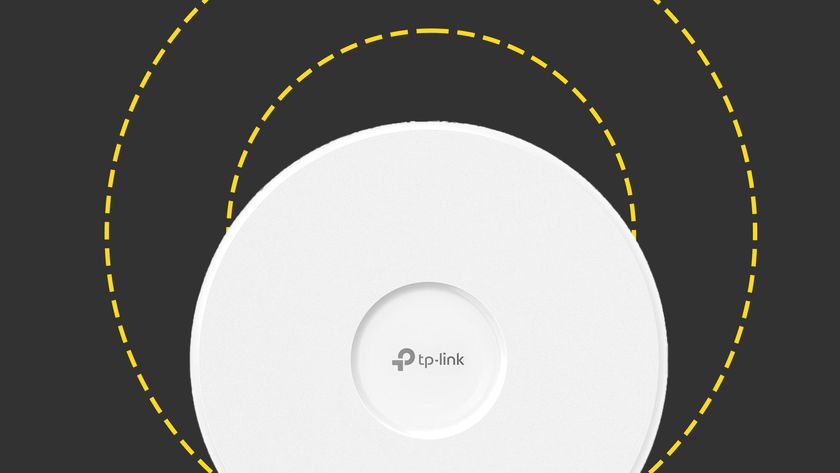Build and installation
The chassis is almost identical to Synology's DS1815+ with eight hot-swap SATA drive bays at the front partnered by a set of status LEDs showing network port activity and system status. Along with the two SFP+ ports at the rear, you get a pair of standard Gigabit and two USB 3 ports as well.
The high-speed Infiniband port can be used to increase storage using Synology's 12-bay DX1215 expansion unit. With a wide range of 6TB drives now certified, this allows maximum capacity to be pushed to a healthy 120TB.
Installation is nicely handled by Synology's discovery web portal as it found the appliance on our network and offered to download the latest DSM software and set it up for us. For testing, we slipped a triplet of 4TB WD Red NAS drives into the tool-less drive carriers and left the routine to create a Synology Hybrid RAID (SHR) array for us.
SHR allows you to mix and match drives of different makes and capacities in the same array without taking a hit on usable capacity. However, it's worth looking at the various storage configuration options available before you go ahead.
For our single SHR volume, we created multiple NAS shares and iSCSI file-level targets where the latter supports thin provisioning, cloning and scheduled LUN snapshots. For performance optimised block-based iSCSI targets, you create a disk group instead but the drawback is you can't use thin provisioning, cloning or snapshots.

DSM 5.1 offers a wealth of cloud backup and file syncing apps
Dave is an IT consultant and freelance journalist specialising in hands-on reviews of computer networking products covering all market sectors from small businesses to enterprises. Founder of Binary Testing Ltd – the UK’s premier independent network testing laboratory - Dave has over 45 years of experience in the IT industry.
Dave has produced many thousands of in-depth business networking product reviews from his lab which have been reproduced globally. Writing for ITPro and its sister title, PC Pro, he covers all areas of business IT infrastructure, including servers, storage, network security, data protection, cloud, infrastructure and services.













